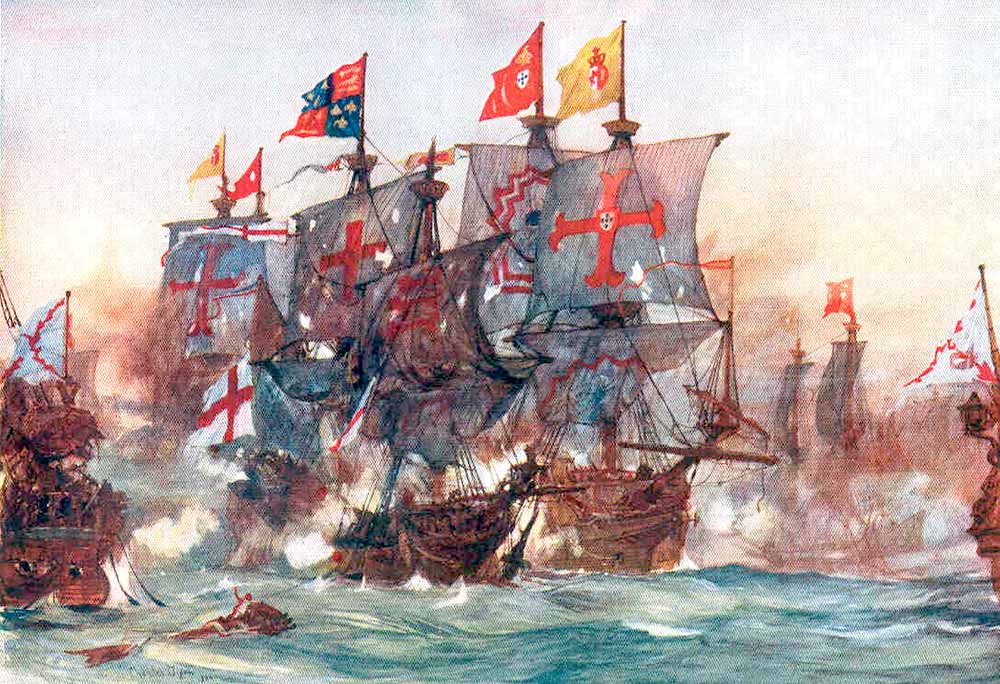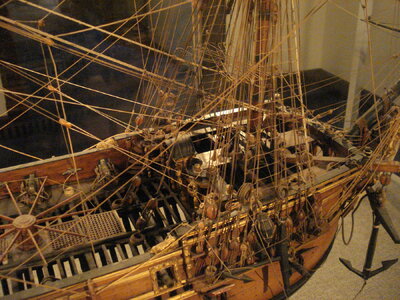You are using an out of date browser. It may not display this or other websites correctly.
You should upgrade or use an alternative browser.
You should upgrade or use an alternative browser.
What do you mean with "1577 period"?Is this true for ship of the 1577 period? thanks again,
There are 200 years in between, so Boudriots information referring the 74 gun ship should be not the main source in my opinion
Better is here really to find information from specialists of this period and galleons
Maybe Kurt alias @DARIVS ARCHITECTVS , @kirill4 , @Steef66 only to mention some of our members can help here
f.e.
BTW: maybe and Interesting read

 www.todoababor.es
www.todoababor.es
Better is here really to find information from specialists of this period and galleons
Maybe Kurt alias @DARIVS ARCHITECTVS , @kirill4 , @Steef66 only to mention some of our members can help here
f.e.
Spanish Galleon 1607 , LEE(IMAI) 1:100 May 2021 [COMPLETED BUILD]
Good day, Dear friends, Let me introduce short build log of assembling LEE(IMAI) kit of Spanish Galleon of 1607 as kit maker stated. This May 2021 I finally reached the end of completion of this many years task !!! :))) When I purchased this kit long time ago...somewhere in 2003 if I...
shipsofscale.com
BTW: maybe and Interesting read

Combate de Isla Flores. Apresamiento galeón Revenge 1591 | Todo a babor
Esta es la relación, por medio de documentación de la época, del célebre combate de Isla Flores, donde fue apresado el famoso galeón inglés "Revenge".
Take a lso a look at the building log @mallacoota who is building in moment the Revenge and just completed the standing rigging
HMS Revenge 1577 by Amati , Victory Models
Masts are stood up and glued in place..no way back now. Gammoning of the bowsprit done.
shipsofscale.com
- Joined
- Aug 8, 2019
- Messages
- 4,364
- Points
- 688

The Revenge you can't compare with a 74 gun ship. Before 1600 there where a lot of things different in rigging. If you look for a good source, there a 2 books what are interresting for you.
RC Anderson - The rigging of ships - In the days of the spritsail topmast, 1600-1720
and the book
Peter Kirsch - Galleon Great Ships of the Armada Era
In the last is a very accurate rigging plan that compares to your ship.
And back to your question, the ratlines start on the first shroud of your ship.
RC Anderson - The rigging of ships - In the days of the spritsail topmast, 1600-1720
and the book
Peter Kirsch - Galleon Great Ships of the Armada Era
In the last is a very accurate rigging plan that compares to your ship.
And back to your question, the ratlines start on the first shroud of your ship.
On English ships..... from James Lees Masting and Rigging English Ships of War page 44. (His book covers 1625 to 1860 so the following may not apply to Revenge.) If there are an odd number of shrouds this leaves a single shroud, the swifter, that has a cont splice eye to go over the mast head so there is one port and one starboard. On some ships every sixth ratline went to the swifter, the rest ended at the aft most shroud rather than at the swifter. This changed on some ships between 1733 and 1773 such that every sixth ratline started at the second most forward shroud. This changed again in 1773 so that the first six ratlines and the upper six ratlines started from the second shroud from forward and finished at the second shroud from aft. In all cases the spaces between rows of ratlines was between 13 inches and 15 inches. Contrary to this description is the impression of the White Bear built in 1573 found on page 39 of Kirsch's book Galleon mentioned above by Stephan. The drawing may or many not be a reliable source but it shows the ratlines all going to the aft most shroud. Modern (1988) models of galleons at RMG show ratlines from the foremost to the aft most shroud from the eyes to the tops. The photo of model from Preble Hall below is well after Revenge but gives an idea of an English ship from 1655. It looks as if no matter the route you take, there is evidence to back up your decision.
Allan

Allan

- Joined
- Aug 8, 2019
- Messages
- 4,364
- Points
- 688

What are you base this argument on? As far as I know, this drawing was prepared in collaboration with Anderson. And Anderson is quoted by many in their books (include James Leest who almost rewrite Anderson's book of rigging with more drawings) because he (Anderson) did very accurate research on the rigging of ships in the golden age. So this drawing is made up from drawings/paintings and models from that time. And therefore very usefull to use on a ship like the Revenge.The drawing may or many not be a reliable source
So this drawing is made up from drawings/paintings and models from that time.
Hi Stephan,
Apologies to you, my comment was not meant as an argument, just a consideration. Perhaps we are referring to different drawings? I was referring to the drawing of White Bear on page 39 of Galleon which was made by Visscher. I have Anderson's book and have used it extensively as it is an excellent source. As Anderson died 14 years before Galleon was published it never dawned on me that Anderson and Kirsch had collaborated. Both list a number of sources/authorities but neither mentions the other in their books that I could find but I could very well have missed it.
Allan
- Joined
- Aug 8, 2019
- Messages
- 4,364
- Points
- 688

No apologies needed. The book of Peter Kirsch comes with drawings to build a Galleon include a rigging plan that also is been spoken about in the book. I ment that drawing. Can happen.
These ships have also more shrouds attached then in later era, because the backstays where not so advanced. A lot of evolution in rigging was going on in the golden age.
There are not so many source to look at for that era. Kirill4 and I are know a lot of this era, we studied a lot about it. Both our conclusies was that there is just a handfull of evidence you can use, the rest is guess. Kurt also is a good builder here to ask. He knows more about other era's too. I'm only studied the golden ages.
These ships have also more shrouds attached then in later era, because the backstays where not so advanced. A lot of evolution in rigging was going on in the golden age.
There are not so many source to look at for that era. Kirill4 and I are know a lot of this era, we studied a lot about it. Both our conclusies was that there is just a handfull of evidence you can use, the rest is guess. Kurt also is a good builder here to ask. He knows more about other era's too. I'm only studied the golden ages.
Last edited:




